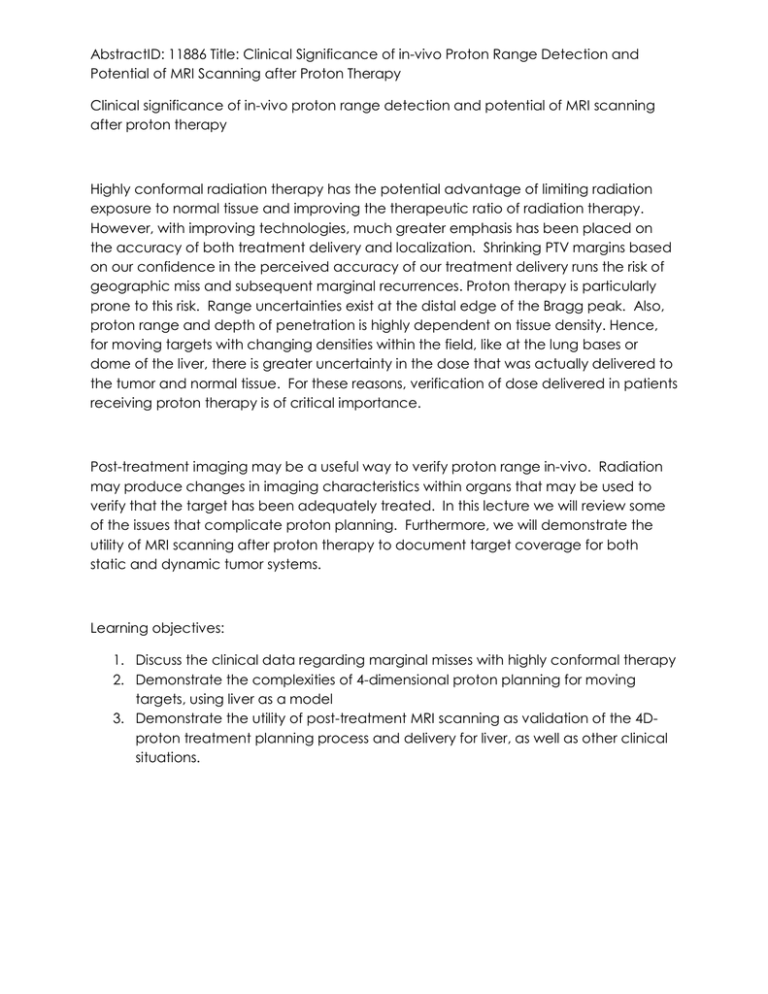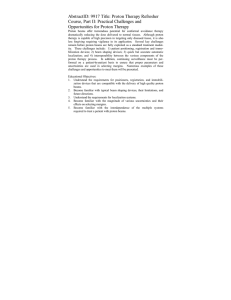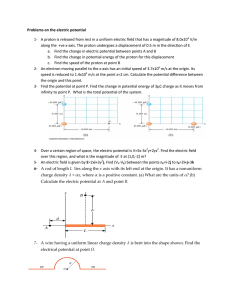AbstractID: 11886 Title: Clinical Significance of in-vivo Proton Range Detection... Potential of MRI Scanning after Proton Therapy
advertisement

AbstractID: 11886 Title: Clinical Significance of in-vivo Proton Range Detection and Potential of MRI Scanning after Proton Therapy Clinical significance of in-vivo proton range detection and potential of MRI scanning after proton therapy Highly conformal radiation therapy has the potential advantage of limiting radiation exposure to normal tissue and improving the therapeutic ratio of radiation therapy. However, with improving technologies, much greater emphasis has been placed on the accuracy of both treatment delivery and localization. Shrinking PTV margins based on our confidence in the perceived accuracy of our treatment delivery runs the risk of geographic miss and subsequent marginal recurrences. Proton therapy is particularly prone to this risk. Range uncertainties exist at the distal edge of the Bragg peak. Also, proton range and depth of penetration is highly dependent on tissue density. Hence, for moving targets with changing densities within the field, like at the lung bases or dome of the liver, there is greater uncertainty in the dose that was actually delivered to the tumor and normal tissue. For these reasons, verification of dose delivered in patients receiving proton therapy is of critical importance. Post-treatment imaging may be a useful way to verify proton range in-vivo. Radiation may produce changes in imaging characteristics within organs that may be used to verify that the target has been adequately treated. In this lecture we will review some of the issues that complicate proton planning. Furthermore, we will demonstrate the utility of MRI scanning after proton therapy to document target coverage for both static and dynamic tumor systems. Learning objectives: 1. Discuss the clinical data regarding marginal misses with highly conformal therapy 2. Demonstrate the complexities of 4-dimensional proton planning for moving targets, using liver as a model 3. Demonstrate the utility of post-treatment MRI scanning as validation of the 4Dproton treatment planning process and delivery for liver, as well as other clinical situations.







